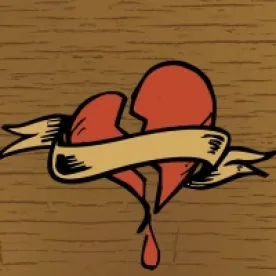On March 26, a federal district court in New York held that the publishers of the popular NBA 2K videogame did not infringe on plaintiff’s tattoo copyrights when the publishers depicted those tattoos on basketball players in NBA 2K. The publishers, 2K Games and Take-Two Interactive Software, were successful in asserting multiple copyright defenses, including implied license, fair use, and the rarely successful de minimis use.
The decision was issued in Solid Oak Sketches, LLC v. 2K Games, Inc., 1:16-CR-00724-LTS-SDA (S.D.N.Y. March 26, 2020). Solid Oak Sketches sued 2K Games and Take-Two Interactive Software (“Take-Two”) over the use of tattoo designs for which Solid Oak owned licenses. Solid Oak alleged copyright infringement based on Take-Two’s use of the tattoo designs, as depicted on three basketball players, in its NBA 2K videogames. However, the court ruled that Take-Two did not infringe on Solid Oak Sketches’s rights based on the three independent copyright defenses.
De Minimis Use Defense. In a rare move, the court found that the tattoos as depicted in the games are not substantially similar to the tattoo designs. The court relied on the well-established “ordinary observer test” which considers “whether an average lay observer would recognize the alleged copy as having been appropriated from the copyrighted work,” quoting Rogers v. Koons, 960 F.2d 301, 307-08 (2d Cir. 1992).
In support of its finding, the court noted that the tattoo designs only appeared on 3 out of 400 available players and the tattoos were significantly reduced in size. Furthermore, even when those three specific players were selected as part of gameplay, the tattoos were “small and indistinct, appearing as rapidly moving visual features of rapidly moving figures in groups of player figures.” Overall, the court found that the tattoos were “‘not displayed [in NBA 2K] with sufficient detail for the average lay observer to identify even the subject matter of the [Tattoos], much less the style used in creating them.’” Taking this all into account, the court concluded that not only did Solid Oak fail to meet its burden in proving that its copyrighted tattoos were substantially similar to Take-Two’s use of the tattoo, but that Take-Two’s use of the copyrighted tattoos, as described above, was de minimis.

Implied License Defense. The court also concluded that Take-Two was within its licensee rights to use the tattoos when portraying the players within its videogames because the tattoo artists granted the players an implied license to the tattoos. It was undisputed that Solid Oak holds an exclusive license for each of the five tattoos. Solid Oak was not, however, licensed to apply those tattoo designs to a person’s skin, and it not have any publicity or trademark rights to the respective basketball players’ likenesses.
As part of the “undisputed factual record,” the tattoo artists stated that: (1) they knew they were tattooing professional NBA basketball players; (2) who were likely appear in various media, such as videogames and advertising; and, (3) that the tattoos would “become part of” the players’ likenesses. The court found these statements to support “the reasonable inference that the tattooists necessarily granted the Players nonexclusive licenses to use the Tattoos as part of their likeness, and did so prior to any grant of rights in the Tattoos to [Solid Oak].”
As such, the court found that the players had the tattoo artists’ implied license to use the tattoos, and thus the players were able to properly exercise their publicity rights when they licensed their likenesses to the NBA and Take-Two. This is, perhaps, one of the more significant conclusions of the court, as the implied license defense may well be applicable with equal force to other media (such as film, television and print media), though time and the courts will tell.
Fair Use Defense. Finally, the court granted Take-Two’s counterclaim seeking a declaration that their use of the tattoo designs in the videogames constituted fair use. The court weighed four factors in this determination: the purpose and character of the use; the nature of the work; the amount or substantiality of use; and the market effect.
The court found that the purpose and character for which Take-Two displayed the tattoos were “entirely different from the purpose for which the tattoos were originally created.” Take-Two’s purpose in portraying the players with their tattoos was to depict the players accurately and to make them generally recognizable in the videogames. In contrast, the tattoos were initially created and tattooed on the players as a way for the players to express themselves. Id. The court also discussed that the tattoos’ infrequent and imprecise observability within the game significantly reduced the expressive value of the tattoos. The court concluded that the tattoo images were “merely ‘incidental to the commercial . . . value of the [game],’” because consumers did not buy NBA 2K to see the players’ tattoos.
When analyzing the “nature of the copyrighted work,” the court discussed the lack of originality of the tattoo designs. The court noted that “none of the tattooists stated in his declaration that the tattoos were based on unique or expressive features. To the contrary, the tattooists each stated that the tattoos copied common tattoo motifs or were copied from designs and pictures they themselves did not create.” For this factor, the court concluded that the tattoos were not sufficiently “expressive” or “creative” enough to make the nature of the work factor weigh against a finding of fair use.
The third factor considered by the court was the “amount and substantiality of the use,” which analyzed whether Take-Two’s use employed more of the copyrighted work than was necessary for the purposes of the first factor, quoting Authors Guild, Inc. v. HathiTrust, 755 F.3d 87, 96 (2d Cir. 2014). Here, the court quickly concluded that this factor could not weigh against fair use, since “it would have made little sense for [Take-Two] to copy just half or some smaller portion of the Tattoos, as it would not have served to depict realistically the Players’ likenesses.”
Finally, the court discussed the “effect on the market” factor, which analyzes the economic harm to the copyright holder when the secondary user’s use constitutes a substitute for the original copyrighted work. The court concluded that Take-Two’s transformative use of the tattoos in its videogames “cannot serve as substitutes for the use of the Tattoo designs in any other medium.” In other words, Take-Two’s use in its video games would in no way interefere with an individual seeking to get a similar tattoo on their body. As the court explained, there is “no evidence from which a reasonable fact finder could conclude that a market for licensing tattoos for use in videogames or other media is likely to develop.” Accordingly, the court sided with Take-Two because it found that the evidence demonstrates that all four factors for the fair use defense weighed in Take-Two’s favor. As with the implied license defense, the court’s fair use analysis may well be significant because of its applicability to challenges by the owners of tattoo artists’ copyrights against forms of media beyond video games.
 Notwithstanding this clear victory, Take-Two still faces another tattoo copyright infringement case, this time involving a copyrighted tattoo on a World Wrestling Entertainment wrestler, in the South District of Illinois District Court case, and it is yet to be determined whether this court will follow suit with the Southern District of New York District Court. See Alexander vs. Take-Two Interactive Software, Inc. (Case No. 18-cv-966-SMY). Stay tuned to see what happens next in this developing area of copyright law.
Notwithstanding this clear victory, Take-Two still faces another tattoo copyright infringement case, this time involving a copyrighted tattoo on a World Wrestling Entertainment wrestler, in the South District of Illinois District Court case, and it is yet to be determined whether this court will follow suit with the Southern District of New York District Court. See Alexander vs. Take-Two Interactive Software, Inc. (Case No. 18-cv-966-SMY). Stay tuned to see what happens next in this developing area of copyright law.





 />i
/>i

